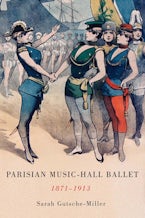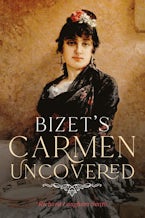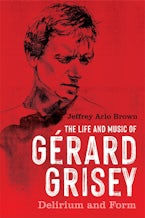
Title Details
468 Pages
22.8 x 15.2 cm
91 music exx. and 14 b/w illus.
Series: Eastman Studies in Music
Series Vol. Number:
186
Imprint: University of Rochester Press
French Art Song
History of a New Music, 1870-1914
- Description
- Contents
- Author
- Reviews
A ground-breaking study of the musical and literary priorities, professional practices and creative interactions that shaped one of the most adventurous artforms of the Belle Époque.
French art song, or mélodie, was one of the most radical and exploratory artforms of the late nineteenth and early twentieth centuries. It was also among the most intimate, a genre of experimentation, hesitation and unfiltered artistic conversation. In this landmark history, Emily Kilpatrick charts the compositional preoccupations and literary stimuli, the friendships and rivalries, critical narratives and performance practices that shaped French art song between 1870 and the First World War. She traces the expanding horizons of an essentially new musical idiom, moving from the lively debates of the avant-garde to the social and artistic contradictions of the salons, the pedagogy of the Paris Conservatoire, and the eventual accession of song to the concert platform and a central place in the world's musical imagination.
The mélodie of the Belle Époque flourished amidst a culture of creative collaboration, and through the musicianship and advocacy of performers as well as composers. Setting key works by Fauré, Duparc, Chausson, Debussy, and Ravel alongside historical curiosities and hidden gems, French Art Song: History of a New Music probes composer-performer relationships and the shaping of performance traditions and addresses the challenges faced by the twenty-first century interpreter. Kilpatrick twines cultural history with musical insight and a wealth of previously unpublished source material in a wide-ranging and richly detailed account of the public and private faces of musical invention.
French art song, or mélodie, was one of the most radical and exploratory artforms of the late nineteenth and early twentieth centuries. It was also among the most intimate, a genre of experimentation, hesitation and unfiltered artistic conversation. In this landmark history, Emily Kilpatrick charts the compositional preoccupations and literary stimuli, the friendships and rivalries, critical narratives and performance practices that shaped French art song between 1870 and the First World War. She traces the expanding horizons of an essentially new musical idiom, moving from the lively debates of the avant-garde to the social and artistic contradictions of the salons, the pedagogy of the Paris Conservatoire, and the eventual accession of song to the concert platform and a central place in the world's musical imagination.
The mélodie of the Belle Époque flourished amidst a culture of creative collaboration, and through the musicianship and advocacy of performers as well as composers. Setting key works by Fauré, Duparc, Chausson, Debussy, and Ravel alongside historical curiosities and hidden gems, French Art Song: History of a New Music probes composer-performer relationships and the shaping of performance traditions and addresses the challenges faced by the twenty-first century interpreter. Kilpatrick twines cultural history with musical insight and a wealth of previously unpublished source material in a wide-ranging and richly detailed account of the public and private faces of musical invention.
Preface
Acknowledgements
Part I: Poet
1 Baudelaire's Invitation to Composers
2 Song and Memory in the "Terrible Year"
3 "To the Depths of the Unknown in Search of the New!"
4 Interlude: The Poet Sings
Part II: Singer
5 Mélodie at the Crossroads
6 Song, Salons, and the "Society Singer"
7 Collaboration and Creative Process
8 Interlude: The Voices of Fêtes Galantes
Part III: Public
9 Singing Histories
10 Reimagining Song at the Conservatoire
11 Mélodie Centre Stage
12 Postlude: Philosophies of Composition
Bibliography
Index
Acknowledgements
Part I: Poet
1 Baudelaire's Invitation to Composers
2 Song and Memory in the "Terrible Year"
3 "To the Depths of the Unknown in Search of the New!"
4 Interlude: The Poet Sings
Part II: Singer
5 Mélodie at the Crossroads
6 Song, Salons, and the "Society Singer"
7 Collaboration and Creative Process
8 Interlude: The Voices of Fêtes Galantes
Part III: Public
9 Singing Histories
10 Reimagining Song at the Conservatoire
11 Mélodie Centre Stage
12 Postlude: Philosophies of Composition
Bibliography
Index
"Balances musical analysis with historical narrative and philosophical speculation...[and] deserves the highest praise. Kilpatrick emphasises the hitherto neglected roles of the composer Pierre de Bréville and his partner the tenor Maurice Bagès, and is at her most entertaining in describing the arrival of Fauré as director of the Paris Conservatoire in 1905 and his campaign against the sloppy, narrow-minded voice teaching he found there. A major contribution." BBC MUSIC MAGAZINE
"This landmark study...explores the musical and literary ethos, professional practices, friendships and rivalries, and creative interactions of composers, poets, singers, and painters. Extensively annotated and illustrated. A valuable resource for performers, teachers, and music lovers. Readers can sit by the piano as they read this book loaded with musical extracts from scores." AMERICAN RECORD GUIDE
"A rich, multifaceted study of the mélodie in its 'golden age'...Combines meticulous philology and archival research, poetic and musical analysis, and approaches from social history, feminist critique, and reception studies. Offers close studies of works not treated elsewhere (like Chausson's early songs or Strohl's Bilitis), models of word-text analysis, and rare insights." MUSICOLOGY AUSTRALIA
Hardcover
9781648250545
November 2022
$110.00 / £95.00
Ebook (EPUB)
9781800108110
November 2022
$29.95 / £24.99
Ebook (EPDF)
9781800108103
November 2022
£24.99 / $29.95
Title Details
468 Pages
2.28 x 1.52 cm
91 music exx. and 14 b/w illus.
Series: Eastman Studies in Music
Series Vol. Number:
186
Imprint: University of Rochester Press
















